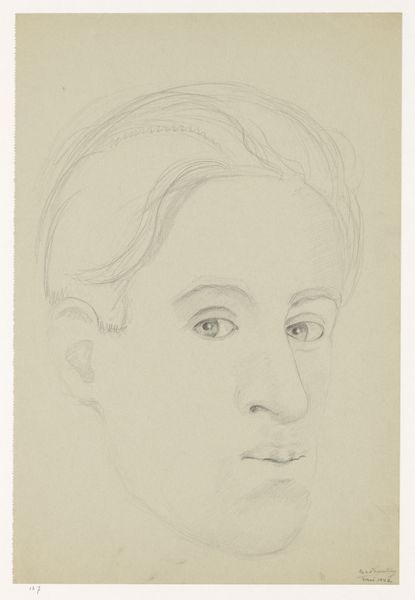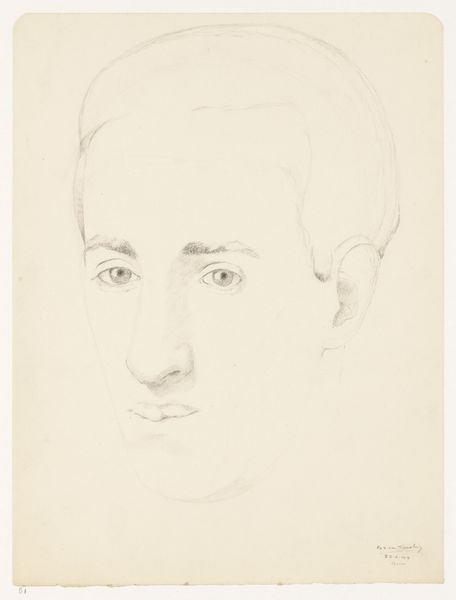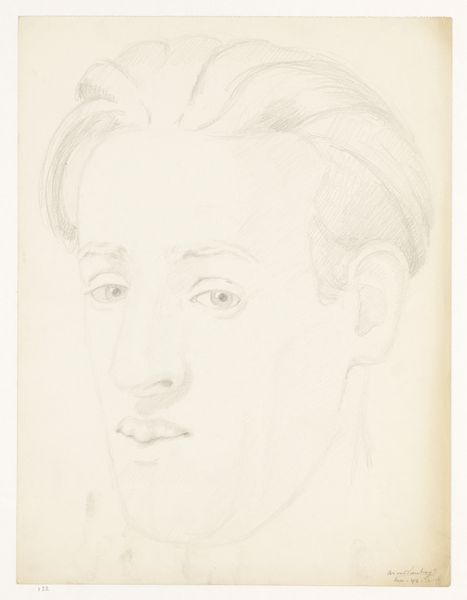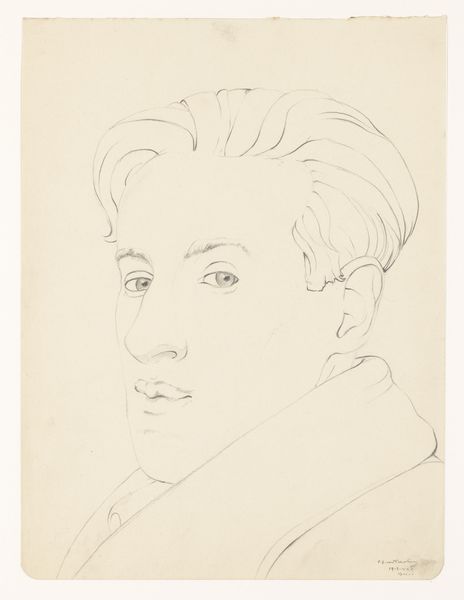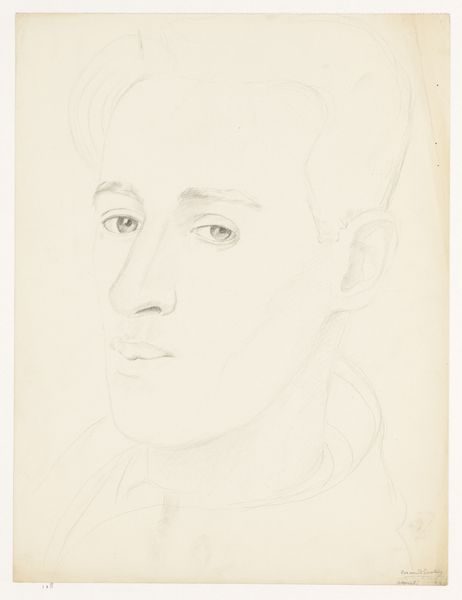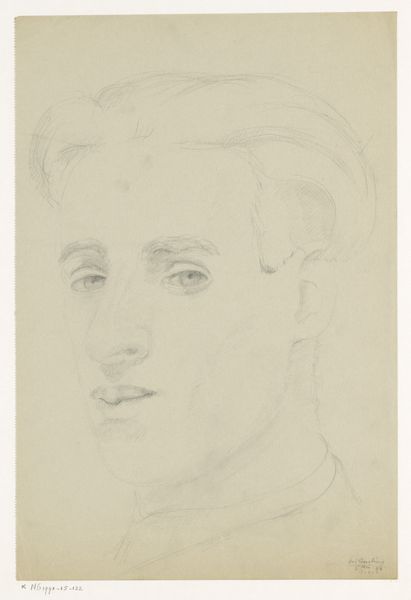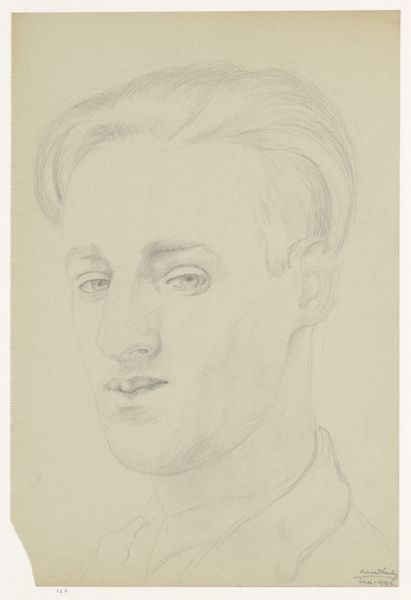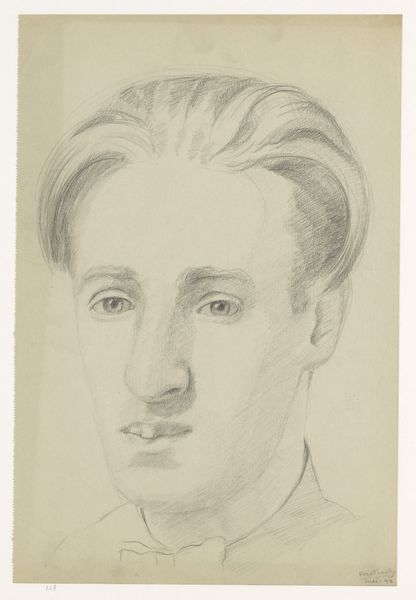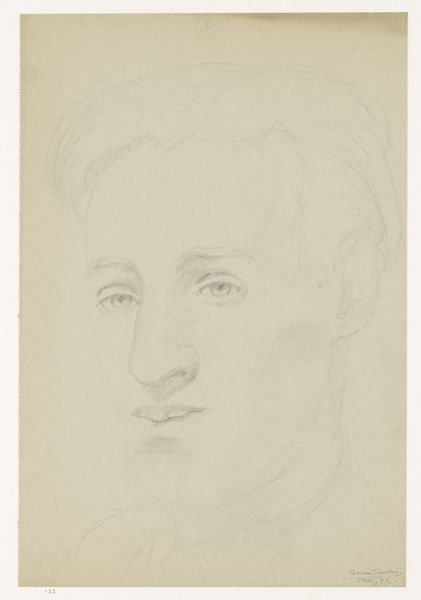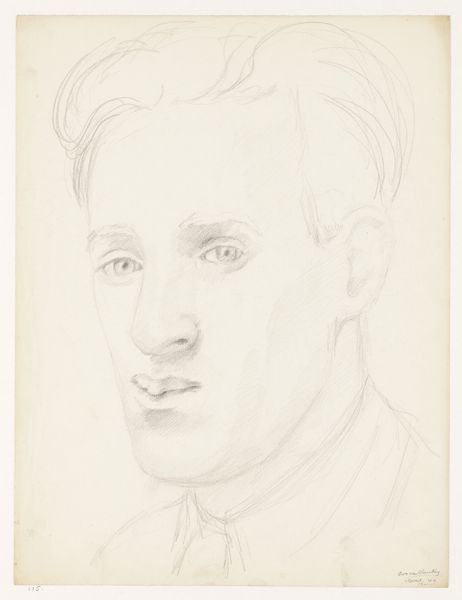
drawing, pencil, graphite
#
portrait
#
drawing
#
facial expression drawing
#
self-portrait
#
pencil sketch
#
caricature
#
portrait reference
#
pencil
#
graphite
#
animal drawing portrait
#
portrait drawing
#
facial portrait
#
portrait art
#
modernism
#
fine art portrait
#
realism
#
digital portrait
Dimensions: height 35.5 cm, width 27.0 cm
Copyright: Rijks Museum: Open Domain
Curator: Before us we have "Self-Portrait: B-1-1, May 1942" by Cor van Teeseling, created sometime between 1942 and 1945. It's currently held in the collection of the Rijksmuseum. Editor: The immediacy is striking. The light pencil strokes, the barest indication of shadow… it creates an almost haunting visage. Curator: It’s important to note that Teeseling, a Dutch artist, was deeply involved in resistance activities during World War II. Understanding the context—the occupation, the dangers—adds another layer to this seemingly simple self-portrait. It becomes a statement of identity, and perhaps defiance, in a time of immense pressure to conform. Editor: The form itself is intriguing. The economy of line, the subtle shifts in tonal value… See how the artist captures light reflecting in the eyes using such minimalist means? Curator: The intensity of his gaze implicates the viewer. Is this a reflection of personal turmoil or of the collective anxiety of a nation under siege? We know he was eventually imprisoned for his resistance work, and this drawing anticipates the sense of constant threat. Editor: True, but the lines that make up his hair have such graceful movement, don’t they? The contrast with the heaviness suggested around the eyes is striking. This subtle counterpoint prevents the drawing from becoming maudlin. Curator: Absolutely. It reminds us that even in the darkest of times, individuals maintain their humanity. It's about resistance, yes, but it is also about perseverance. Teeseling's refusal to be erased by history, as it were. Editor: Indeed. Considering the strategic deployment of shading as well as negative space, what we glean most is the artist’s profound awareness of materials, giving symbolic depth via formal constraint. Curator: A remarkable testament, ultimately, to the power of art as a means of bearing witness, as well as a powerful message to resist, at a time when personal identity was under erasure. Editor: Precisely. The piece is far from finished, which somehow underscores the reality it conveys of interrupted lives and stolen identities, yet also hinting to the idea that resistance remains constant.
Comments
No comments
Be the first to comment and join the conversation on the ultimate creative platform.
